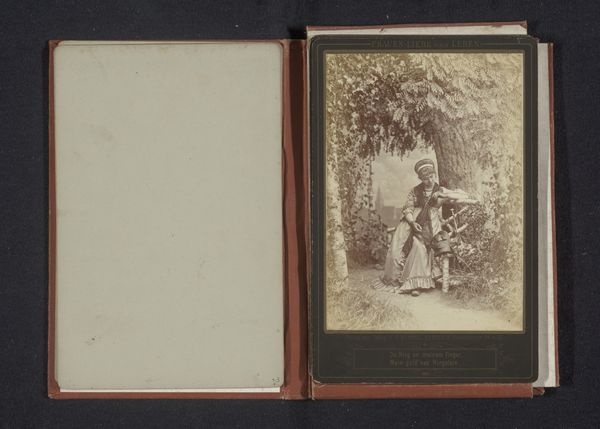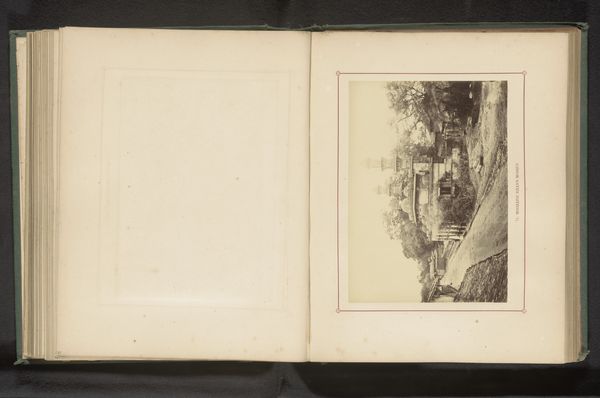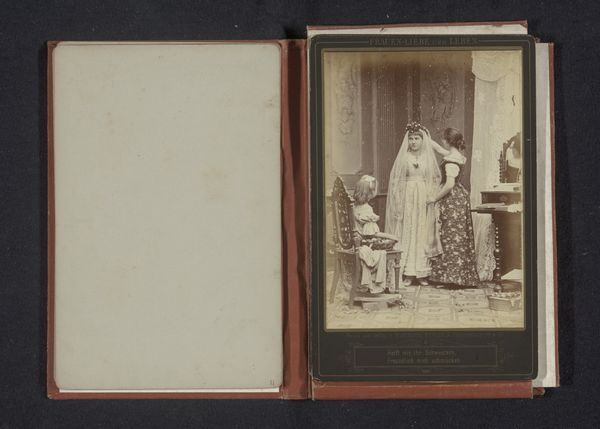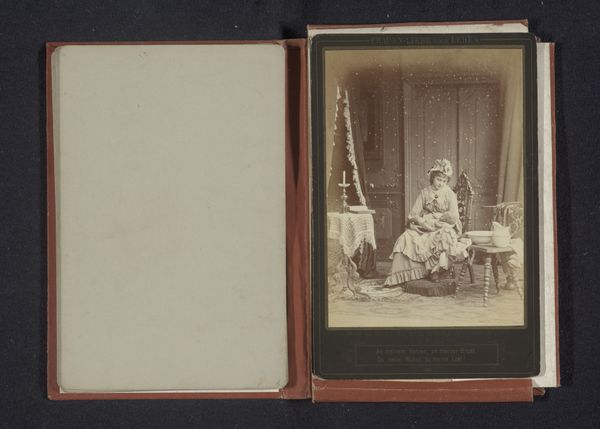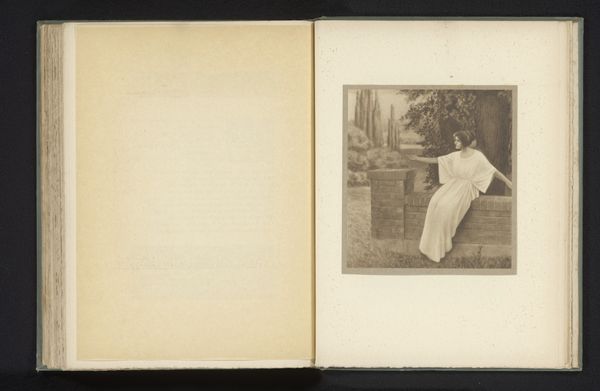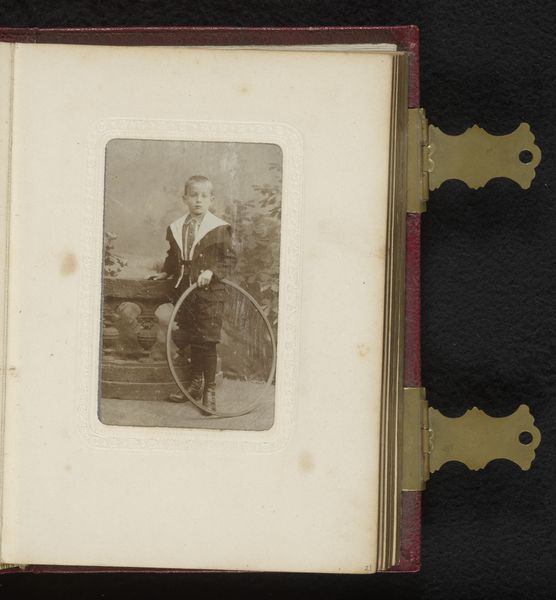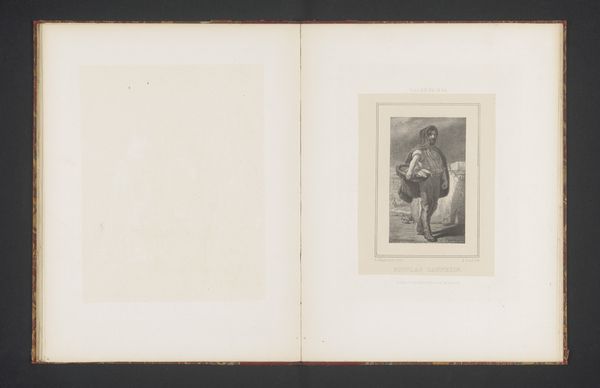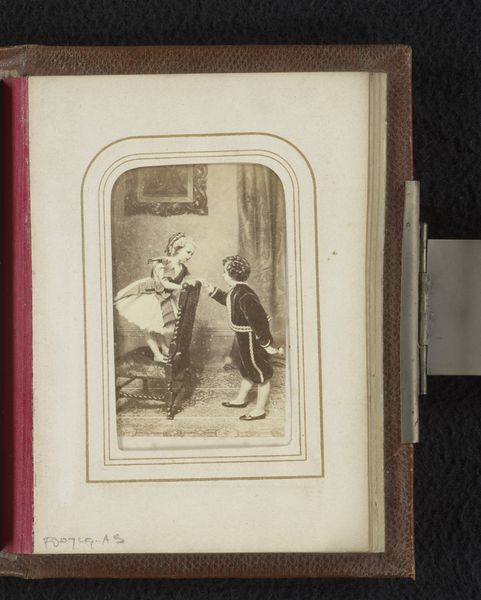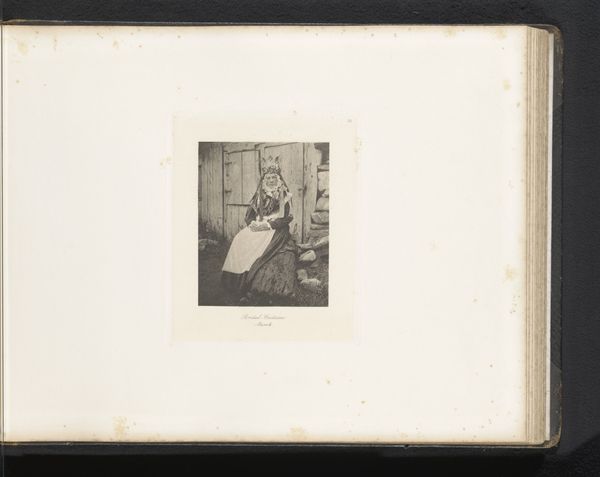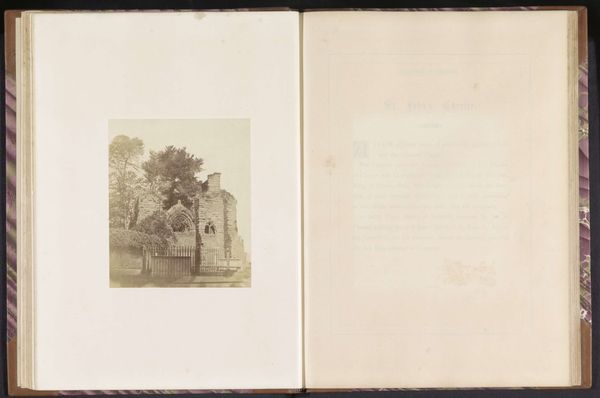
Dimensions: height 134 mm, width 95 mm
Copyright: Rijks Museum: Open Domain
Curator: H. Hirsch’s sepia-toned photograph from 1880, called "Portret van een onbekende vrouw en man, zittend aan een tafel in een tuin," it translates to "Portrait of an unknown woman and man, sitting at a table in a garden," offers a tantalizing glimpse into the past. What springs to mind when you look at it? Editor: The mood is surprisingly intimate despite the formality of dress. The light is dappled, soft. I almost feel as if I'm eavesdropping on a very private moment. Curator: Precisely! I think it is an interesting example of Romanticism sneaking its way into photography at this time. What are the prominent elements for you, iconographically speaking? Editor: The clothing definitely signifies something, this sort of fancy dress harkens back to a pre-industrial age—a rejection of modernity and embracing of idealized past. And their proximity to the table indicates a moment of respite, of civilized, perhaps even romantic, interaction. Curator: A pointed return to genre painting then. Look at the shadow the tree casts. It feels almost staged, deliberately placing them in this romanticized setting, but yet…the people are strangers to us. It’s fascinating. I almost want to write a story about them. Who are they really? What is the nature of their conversation? Is this truly an idyllic scene? Editor: The ambiguity is what draws you in, right? I find the fact that it is an early photograph striking too, the subjects had to remain quite still for the duration of the shoot! The length and cost of the process also denote that having one’s picture taken at this time meant something special. The setting must, in some way, be meaningful. Curator: Do you get a sense that they know their photograph is going to have meaning—will be examined one day, you and I poring over every detail? Editor: The fact that this image survived, in its book, does suggest a certain reverence. Someone deemed their moment together worth keeping safe. Curator: It is a perfect paradox, staged but authentic. What stories do you suppose this little piece of cultural memory whispers? Editor: Exactly. The garden, table and their relationship symbolize life's pleasant interactions, its joys and consolations. What do you think? Curator: Perhaps also that they hoped to preserve that single lovely afternoon forever? Like holding onto a faded flower. I hope whoever keeps their memory has fond feelings when thinking about them.
Comments
No comments
Be the first to comment and join the conversation on the ultimate creative platform.
